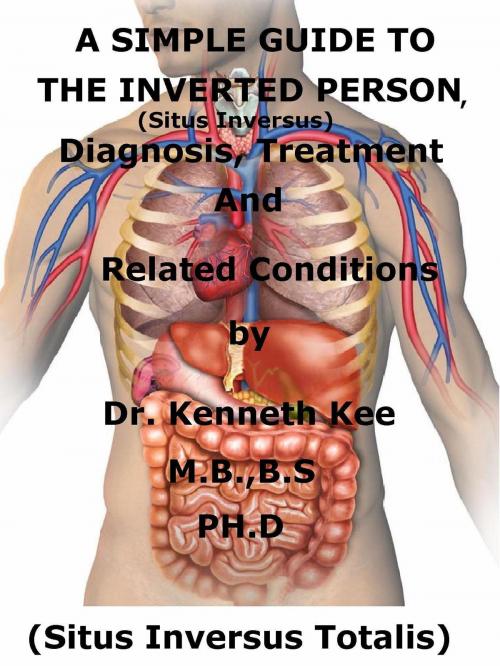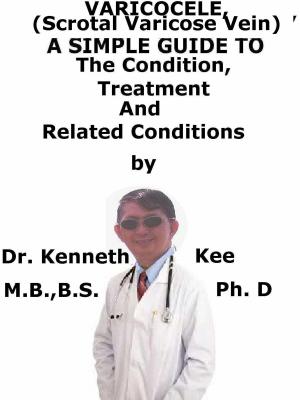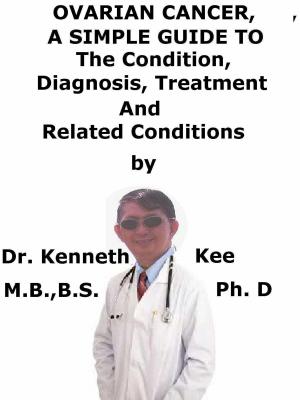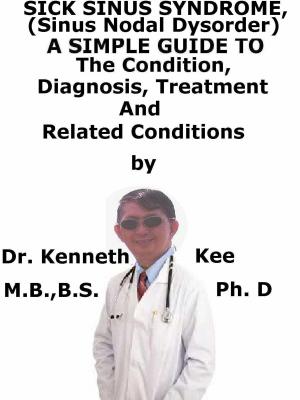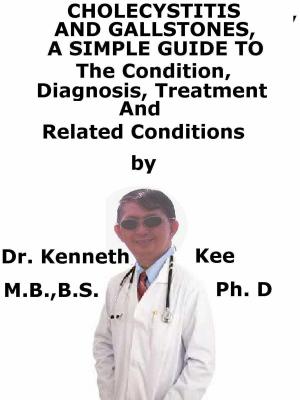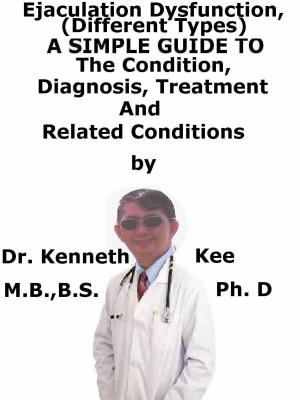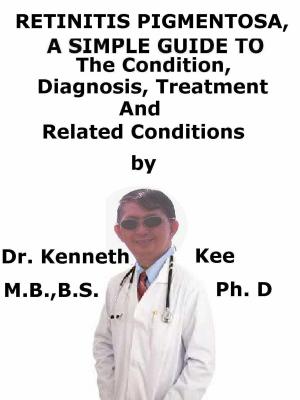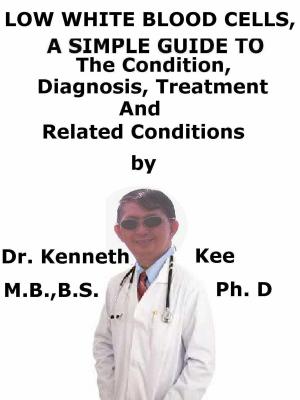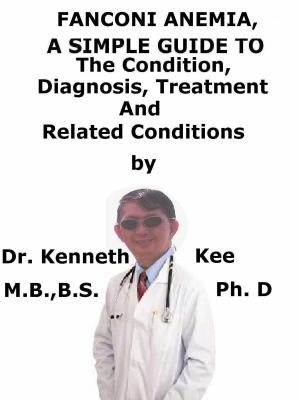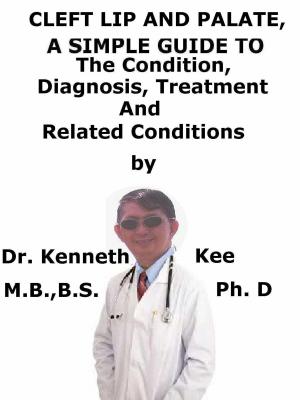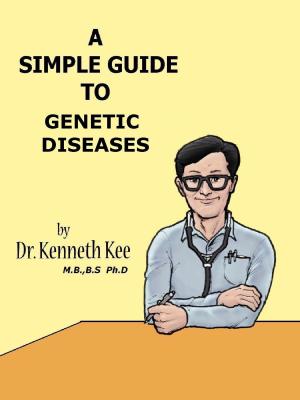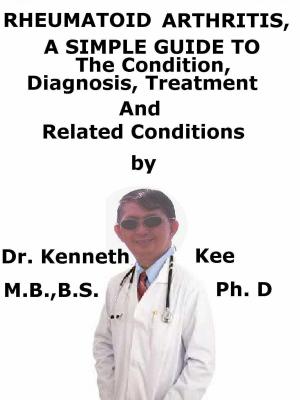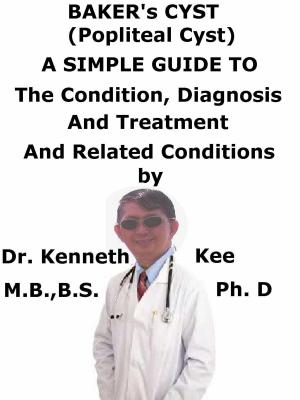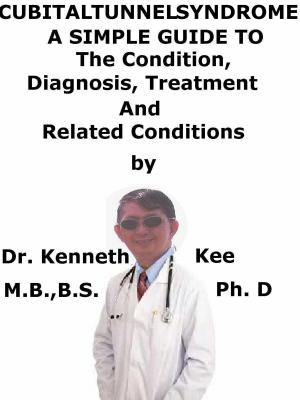A Simple Guide To The Inverted Person, (Situs Inversus) Diagnosis, Treatment And Related Conditions
Nonfiction, Health & Well Being, Health, Ailments & Diseases, Genetic, Heart| Author: | Kenneth Kee | ISBN: | 9781370415755 |
| Publisher: | Kenneth Kee | Publication: | March 10, 2018 |
| Imprint: | Smashwords Edition | Language: | English |
| Author: | Kenneth Kee |
| ISBN: | 9781370415755 |
| Publisher: | Kenneth Kee |
| Publication: | March 10, 2018 |
| Imprint: | Smashwords Edition |
| Language: | English |
This book describes The Inverted Person (Situs Inversus), Diagnosis and Treatment and Related Diseases
While working in the hospital, I was asked to examine a patient of 45years old who came in complaining of abdominal pain.
So I proceeded to observe, palpate and listen to the abdominal sounds and was surprised to find the liver was on the left side of the upper abdomen.
There was no other abnormality in the abdomen except for some gas.
Acting on a suspicion, I listened to the chest and found the apex or tip of the heart was on the right side of the chest.
The heart was pointing in the opposite direction.
I asked the patient whether he knew that his organs were inverted.
He smilingly said that he had known it from childhood.
X-rays had been done when he was a child and showed that his organs were in the opposite position like a mirror image.
He was advised to carry a card to inform doctors that his organs were in an opposite position of the body so that operations such as appendicectomy will not be done on the right side but on the left where the appendix was located.
This was the first and last time that I had come across an inverted man or situs inversus as he is called in latin.
What Is the Inverted person?
Situs inversus (also called situs oppositus) is a congenital disorder in which the major visceral organs are reversed or mirrored from their normal locations.
The liver, for instance, is now on the left, the spleen on the right (Inverted, for want of a better word).
In some patients, a person can live most of their life without realizing they have situs inversus.
Many believe the disorder holds hints to understanding how the bodies differentiate right from left.
The normal organization of internal organs is called situs solitus while situs inversus is normally the mirror image of situs solitus.
In the most frequent circumstances, situs inversus totalis involves the total transposition (right to left reversal) of all of the abdominal organs.
The heart is not in its normal position in the left chest, but is on the right, a disorder known as dextrocardia (literally, right-hearted).
Causes
Situs inversus is a rare congenital disorder in which all of a person’s internal organs in the thorax and abdomen are located on the opposite side to where they should be.
This is a congenital disorder that happened at birth.
Situs inversus is normally a genetic disorder with an autosomal recessive inheritance while it can be X-linked or found in identical "mirror image" twins.
Symptoms
Because the organs can be working in situs inversus, it is possible for a person to have no complications.
Other patients can have poor cardiac function or a lung disorder called primary ciliary dyskinesia (PCD), which causes mucus buildup in the lungs.
This can result in chronic bronchitis and sinusitis.
People with situs inversus and PCD are said to have Kartagener’s syndrome.
Diagnosis
Diagnosis of situs inversus can be made using ordinary radiographic imaging methods such as:
1.Ultrasound,
2.Computed tomography (CT), and
3.Magnetic resonance imaging (MRI)
Treatment
A person with a total mirror image situs inversus with no heart defects requires no treatment.
It is essential to let the child's doctor know the heart is on the right side of the chest.
The medicines are:
1.Water pills
2.Drugs that permit the heart muscle pump more forcefully
3.Drugs that decrease blood pressure and ease the workload on the heart (ACE inhibitors)
Children with Kartagener syndrome will need treatment repeatedly with antibiotics for sinus infections.
Children with a missing or abnormal spleen need long-term antibiotics.
The patient may require surgery to correct any obstructions
TABLE OF CONTENT
Introduction
Chapter 1 The Inverted Person
Chapter 2 Causes
Chapter 3 Symptoms
Chapter 4 Diagnosis
Chapter 5 Treatment
Chapter 6 Prognosis
Chapter 7 Kartagener Syndrome
Chapter 8 Bronchiectasis
Epilogue
This book describes The Inverted Person (Situs Inversus), Diagnosis and Treatment and Related Diseases
While working in the hospital, I was asked to examine a patient of 45years old who came in complaining of abdominal pain.
So I proceeded to observe, palpate and listen to the abdominal sounds and was surprised to find the liver was on the left side of the upper abdomen.
There was no other abnormality in the abdomen except for some gas.
Acting on a suspicion, I listened to the chest and found the apex or tip of the heart was on the right side of the chest.
The heart was pointing in the opposite direction.
I asked the patient whether he knew that his organs were inverted.
He smilingly said that he had known it from childhood.
X-rays had been done when he was a child and showed that his organs were in the opposite position like a mirror image.
He was advised to carry a card to inform doctors that his organs were in an opposite position of the body so that operations such as appendicectomy will not be done on the right side but on the left where the appendix was located.
This was the first and last time that I had come across an inverted man or situs inversus as he is called in latin.
What Is the Inverted person?
Situs inversus (also called situs oppositus) is a congenital disorder in which the major visceral organs are reversed or mirrored from their normal locations.
The liver, for instance, is now on the left, the spleen on the right (Inverted, for want of a better word).
In some patients, a person can live most of their life without realizing they have situs inversus.
Many believe the disorder holds hints to understanding how the bodies differentiate right from left.
The normal organization of internal organs is called situs solitus while situs inversus is normally the mirror image of situs solitus.
In the most frequent circumstances, situs inversus totalis involves the total transposition (right to left reversal) of all of the abdominal organs.
The heart is not in its normal position in the left chest, but is on the right, a disorder known as dextrocardia (literally, right-hearted).
Causes
Situs inversus is a rare congenital disorder in which all of a person’s internal organs in the thorax and abdomen are located on the opposite side to where they should be.
This is a congenital disorder that happened at birth.
Situs inversus is normally a genetic disorder with an autosomal recessive inheritance while it can be X-linked or found in identical "mirror image" twins.
Symptoms
Because the organs can be working in situs inversus, it is possible for a person to have no complications.
Other patients can have poor cardiac function or a lung disorder called primary ciliary dyskinesia (PCD), which causes mucus buildup in the lungs.
This can result in chronic bronchitis and sinusitis.
People with situs inversus and PCD are said to have Kartagener’s syndrome.
Diagnosis
Diagnosis of situs inversus can be made using ordinary radiographic imaging methods such as:
1.Ultrasound,
2.Computed tomography (CT), and
3.Magnetic resonance imaging (MRI)
Treatment
A person with a total mirror image situs inversus with no heart defects requires no treatment.
It is essential to let the child's doctor know the heart is on the right side of the chest.
The medicines are:
1.Water pills
2.Drugs that permit the heart muscle pump more forcefully
3.Drugs that decrease blood pressure and ease the workload on the heart (ACE inhibitors)
Children with Kartagener syndrome will need treatment repeatedly with antibiotics for sinus infections.
Children with a missing or abnormal spleen need long-term antibiotics.
The patient may require surgery to correct any obstructions
TABLE OF CONTENT
Introduction
Chapter 1 The Inverted Person
Chapter 2 Causes
Chapter 3 Symptoms
Chapter 4 Diagnosis
Chapter 5 Treatment
Chapter 6 Prognosis
Chapter 7 Kartagener Syndrome
Chapter 8 Bronchiectasis
Epilogue
